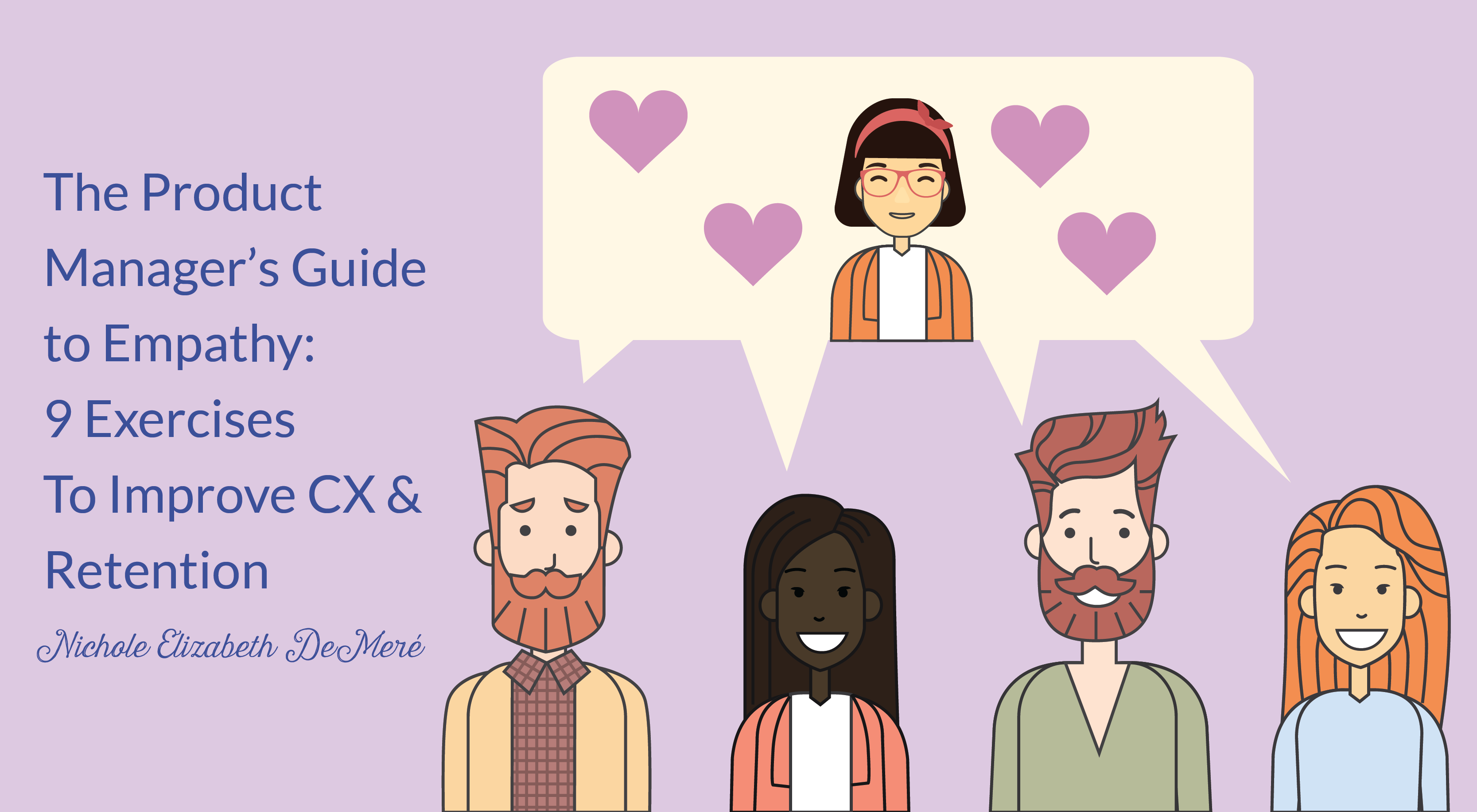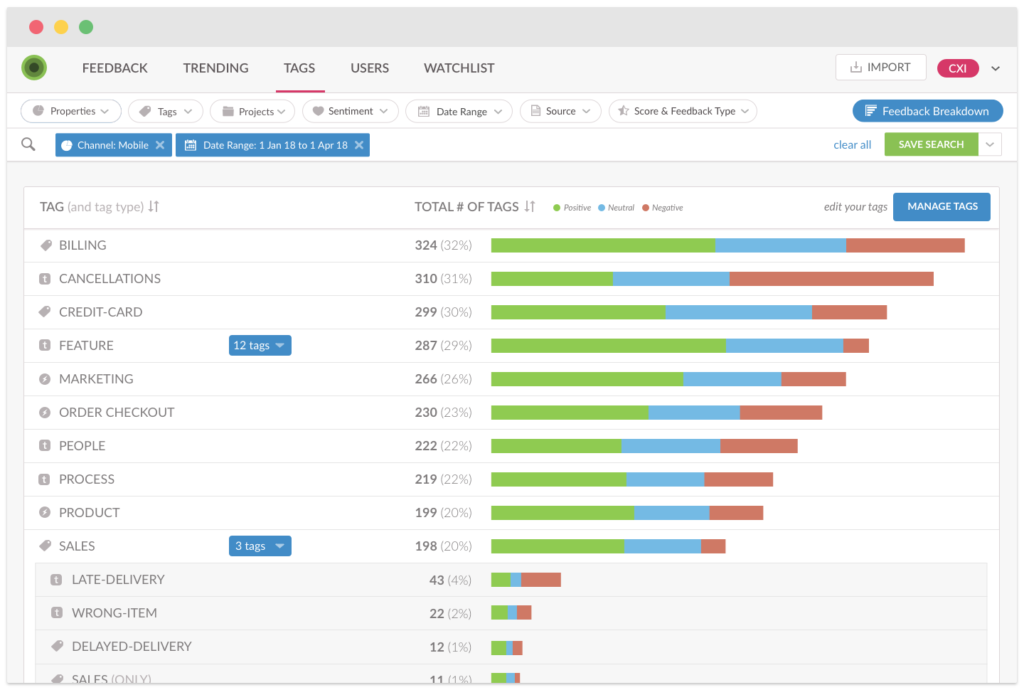9 Empathy Exercises that Help Product Teams Improve CX

What is Empathy?
Empathy is the ability to understand and share the feelings of another. For Product Managers looking to improve customer experience (CX), that definition translates to doing more than understanding the user’s pain points, but also looking at the emotional landscape of what it’s like to use the product – when it is working, and when it isn’t working.
Empathetic Product Managers ask themselves:
- How does using the product make the customer feel?
- How does the customer want to feel when using your product? What would be the best possible emotional outcome for them?
- How do I ensure the product developers understand and take the customers’ needs into consideration in their process?
The answers to those questions affect every facet of business, from acquisition to retention. It’s how, through CX, you can generate rapid growth through word-of-mouth recommendations, and sustain your success with customers who never want to leave.
Tying Empathy into CX
Empathy is a soft skill, and while those are typically difficult to measure, the effects of empathetic product development can be seen in every CX metric: Customer satisfaction (CSAT), Customer Effort Score (CES) and Net Promoter Score (NPS).
Sinead Cochrane, Senior Product Researcher at Intercom, wrote “For product teams, empathy building activities such as observing research or doing customer support is often not considered ‘real work’. However, product teams that consistently keep customer needs in mind are able to maintain and evolve their products in ways that won’t negatively impact the user experience.”
For her, empathy for product departments means “When a customer tells you something is broken, you are able to imagine the impact it’s having on the job they’re trying to get done,” and, “you realize the emotional impact the problem is having on that person.”
But I think we can go further than just recognizing the emotional impact of problems. That’s scratching the surface of what having empathy for customers can mean for producing superior customer experience.
Because empathy shouldn’t be reduced to realizing customers feel bad when a product isn’t working for them. A whole new world opens up when you also consider how you can design your product, updates, and expansions to enhance positive emotions as well.
Here are the questions that lie at the heart of empathetic product management:
- How can you get more emotionally in sync with your customers?
- Which are the most important negative emotional outcomes to manage?
- Which emotions should you seek to heighten (and how?)
To answer these questions, try these empathy building exercises.
Empathy Building Exercises for Product Managers and their Teams
-
Listen actively to discover underlying needs and emotional motivations
Often relegated to customer service and customer success departments, ‘active listening’ to find out why your customers use your product and what they really want to achieve is very important. You can’t get the depth and honesty of answers by just sending out a survey – this works much better if you do phone, Zoom or in-person interviews. In fact, Roman Pichler recommends product managers meet real users on a regular basis. You may find that your assumptions of why customers use your product aren’t accurate, or don’t tell nearly enough of the story.
“At first, our assumption was that they wanted to make more money. That often was true, but frequently we heard something different. Many simply wanted to maintain the business but run it more efficiently so they could have more free time (we heard about golfing on Fridays more than once). Others wanted to build a sustainable business they could pass on to their son or daughter.” – Jim Semick, Founder & Chief Strategist at ProductPlan
To get down to customers’ real motivations, ask open-ended questions beginning with “why” and “how.” Then make sure to record their answers in their own words (you can hand those assets to your copywriters for later use).
-
Use your own product
Empathy is often described as ‘putting yourself in someone else’s shoes’ – and there’s no better way to do this for a product manager than to actually use the product, just like any user would. You’ll empathize with users’ frustrations as you experience your own product’s shortcomings and hopefully find moments where it’s possible to create more delight.
But always keep in mind – you are not the average user. You’ll still need to listen to your users to get a complete picture of how they feel, and what problems they perceive as being severely aggravating.
-
Share verbatim comments
Someone, somewhere, is tracking customer experience metrics, sending out surveys, and collecting the answers. That someone might even be you. When reading users’ written responses, don’t just look for problems to solve and ignore the positive comments. Read them for emotion and see what conclusions you can draw about what people are feeling, and want to feel.
Pick a few relevant verbatim comments to bring to the rest of the product team. Reading these comments often helps engineers and designers feel the same joy or frustration as their users. This new emotional understanding will help you evangelize CX as a priority with everyone.
-
Mine your qualitative data and quantify customer sentiment
Those open-ended response answers are a goldmine for user research that can alert you to problems – and give you hints into the customer’s emotional state of mind. However, once you are getting more than a hundred comments a month, seeing the forest for the trees can be a difficult exercise. Qualitative feedback is notoriously tough to quantify, but it is now possible and easy to quantify sentiment with the help of machine learning.
AI-powered platforms, like InMoment CXInsight™, automatically sort your customer comments into themes while simultaneously assigning positive or negative sentiment. This provides you with a big picture understanding of how customers feel about your product and why. Categories of feedback vary by business sector and business model–payment processes & delivery for e-commerce, perhaps, while UX and usability may surface for SaaS products. Quantifying the sentiment of what your customers are talking about can help you track emotional trends over time. Presenting this kind of data alongside verbatim comments connects customer emotion with real business consequence.

-
Set empathy KPIs
What gets measured gets done, and adding empathy into your product development work is no different. The KPIs for empathy may look a little different than your typical performance indicators, but the good news is: They’re not difficult to get. You’ll find key performance indicators like NPS, CES and CSAT are a good start, and comments in the open-ended questions can give you insight into the metric. Start identifying what kinds of ratings and qualitative answers correlate to genuinely happy customers – and frustrated customers likely to churn.
-
Chart out an empathy map
You’ve done your user journey, but even though it’s part of the buyer persona building process, you may not have done an empathy map.
- What your user sees – on competitors’ websites, common visuals in their industries, maybe what they enjoy watching or reading
- What your user says – how they measure success, what they say they want, what they say about your product
- What your user hears – what their influencers are saying, not just about your product, but about their jobs and what constitutes success, what they enjoy, what they don’t like about their experiences with your competitors, etc.
- What your users think and feel – worries, aspirations, what they really want, what really annoys them
Notice how the empathy map includes business/industry-specific observations, but also branches out into the user’s personal life and larger environment. People are not their jobs – or even their ‘jobs to be done.’ For true empathy, you have to look at the whole person.
This is a great activity to get other teams involved in – consider hosting a meeting with Customer Success, Sales, Marketing and Customer Service for a wider scope of insights.
Activities involving multiple teams help to build a shared understanding of your customers’ experiences that can strengthen the whole company.
-
Add happy moments to your Customer Journey Map
You’ve probably mapped out your customer/user journey, but you probably didn’t include this: Happy moments. See if you can take your old customer journey map and mark the points where positive, fun, delightful things happen. Can’t think of any? Then you have some serious CX work to do!
And of course, also note points where you’ve observed friction, difficulties, and problems, and address those in the order of biggest impact + easiest to implement.
-
Work in Customer Support for an afternoon
Whether that means answering the live chat questions, picking up the phone, or monitoring your product’s customer Slack channel, try out being the Customer Support agent for an afternoon to and put yourself on the front lines! There’s no better way to find problems than to let customers tell you exactly – and in great detail – what they are. And they’ll likely throw in how frustrated it makes them feel too.
-
Build a prototype to test your emotional hypotheses
By now, you probably have a few ideas on how you can improve the customer experience, and it might be time to test those theories. Create a prototype for a select group of qualified users to try (and react to). And, if possible, have them test the prototype in a testing facility that allows you to observe their reactions as they use your product.
If there is a Golden Rule for empathy, it’s a simple one: Forget your assumptions and be genuinely interested and curious about what people are feeling (not just what they’re doing) while using your product. Empathy is a learned skill that needs practice so don’t forget to try out these empathy exercises on a frequent basis for enhanced customer experience.
To quote Maya Angelou: “People will forget what you said, people will forget what you did, but people will never forget how you made them feel.”
Be the customer experience champion at your company. Sign up today for free Net Promoter Score, CSAT or Customer Effort Score feedback with InMoment.

